How Essential are Fatty Acids for Babies?
In this episode we're talking about:
- the importance of essential fatty acids, particularly omega-3 fatty acids, for babies' brain and eye development.
- the need to provide these fatty acids through natural food sources rather than relying on expensive supplements.
- how to ensure babies receive adequate amounts from natural food sources to support their development.
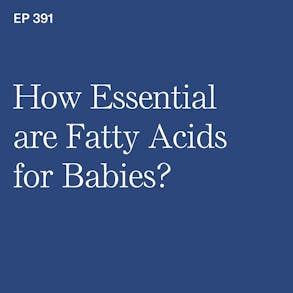
LISTEN TO THIS EPISODE
Episode Description
How do the essential fatty acids in fish foods help your baby’s still developing brain? In this episode we cover both EPA and DHA exploring how your baby can safely get these fatty acids…even if your family doesn’t eat a lot of fish.
Links from this Episode
- Baby-Led Weaning with Katie Ferraro program with the 100 First Foods™ Daily Meal Plan, join here: https://babyledweaning.co/program
- Baby-Led Weaning for Beginners free online workshop with 100 First Foods™ list to all attendees, register here: https://babyledweaning.co/baby-led-weaning-for-beginners
Other episodes related to this topic:
Episode 31 - Fish: How to Introduce Your Baby to this Potentially Allergenic Food

Latest Episodes
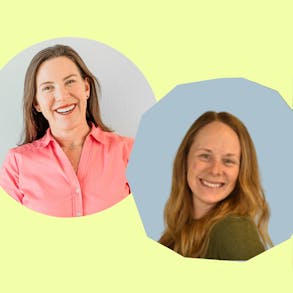
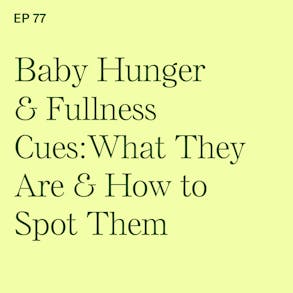
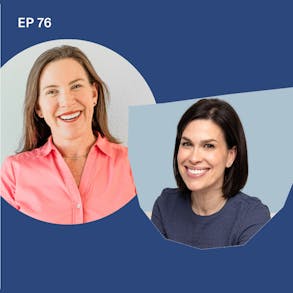
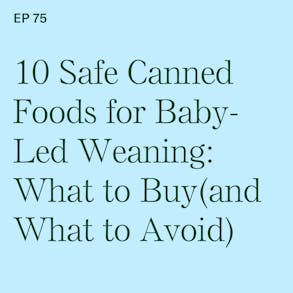
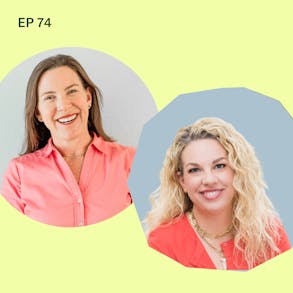
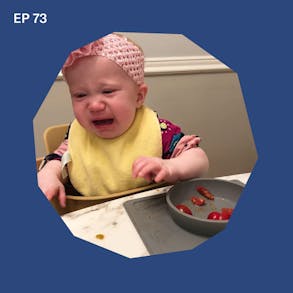
Katie Ferraro (1s):
And if you look closely at the labels of those value added egg products, the ones that say they're high in EPA and DHA, this is really just a marketing gimmick, okay? What they do is they, chickens are just fed a diet that's slightly higher in Omega-3 fatty acids. So specifically EPA and DHA. They just add extra flaxseed to it and then it results in eggs that have like slightly elevated levels of these essential fatty acids. But the absolute amounts are really not that significant. And you're much better served to have your baby eat a couple of bites of fatty fish like salmon, than to eat tons and tons of these value added, quote unquote EPA plus DHA eggs. Save your money. Hey there. I'm Katie Ferraro, Registered Dietitian, college nutrition professor, and mom of seven specializing in baby-led weaning.
Katie Ferraro (44s):
Here on the Baby-Led Weaning Made Easy podcast, I help you strip out all of the noise and nonsense about feeding, leaving you with the confidence and knowledge you need to give you baby a safe start to solid foods using baby-led weaning. When you hear the term essential fatty acids, do your like eyes kind of glaze over and you're like, bored. I'm a dietitian and I remember when we used to learn about essential fatty acids, I was like, oh this does not sound that interesting. But then when I had kids, I was like, hold up. If they're essential fatty acids, it means that the body can't make them and we need to provide them in the diet, and they probably do something important.
Katie Ferraro (1m 26s):
So I should probably learn about them, and that's why I'm covering this topic today because I've realized we're almost 400 episodes into the podcast, and essential fatty acids are super important. I'm gonna start calling 'em important fatty acids. And they come from foods. As your baby is starting to get less nutrition from breast milk, we need to replace the essential fatty acids that they were getting from the breast milk or that were fortified into formula. If you're formula feeding and figure out how our babies can get these from food from naturally occurring sources so you don't have to go buy expensive, silly supplements that your babies don't need, and so that you can get the benefits that these essential slash super important fatty acids provide for your baby. So let's get started. What are Omega-3 fatty acids?
Katie Ferraro (2m 6s):
Okay, how are they different from omega-6 fatty acids? Well, the omega-3 fatty acids are kind of this umbrella term for EPA and DHA. So these are longer chain polyunsaturated fatty acids, if you want like the the scientific explanation. But what they basically do is the DHA docosahexaenoic acid. That's a huge part of your baby's brain, okay? And also the development of the retina of their eyes. And we know that adequate DHA, so if you give your baby enough breast milk and then enough food that has this compound in it over time, that your baby will have adequate memory. It's linked to opportunities for learning.
Katie Ferraro (2m 47s):
And again, that brain and that eye health. Now, when it comes to EPA Eicosapentaenoic acid, EPA is known and kind of famous for its anti-inflammatory properties. So it does things like help improve immune function, plays a role in heart development, and that's kind of from heart disease and heart disease prevention standpoint. That's more important for older people, adults, things like influencing your blood pressure. But in the research, okay, if we look at children age 9 to 12 months, there's this one study where they supplemented baby's diets with fish oil. So fish oils are a natural source of EPA and DHA, okay? That the babies exhibited positive effects on attention scores during a free play test.
Katie Ferraro (3m 29s):
Okay? Also led to a little bit lower drop in their systolic blood pressure. And the suggestion here is that having these Omega-3 Fatty acids later in infancy may have dual benefits, like it could help your baby from a cognitive standpoint and help them from a heart standpoint. Now, we also need to take research like this with a grain of salt. Does that mean you should run out and start buying Omega-3 fish oils for your baby on top of everything else that you're doing for your baby? No, absolutely not. I do wanna point out that when we study nutrition, especially when we're looking at some of the more nuanced parts of nutrition micronutrients, things you need in really, really small amounts, the notion here is that if your baby were deficient in them, then we would expect your baby to have issues with their brain development, with their eye development, with their immune function, with inflammation, et cetera, if they were deficient.
Katie Ferraro (4m 16s):
But just flipping that and giving your baby excessive amounts of these things and being like, well, it's gonna make them smarter, have better eye health. That's not how that works. So our goal here is to help prevent deficiency. Okay? So a lot of the information that you'll read online, if you're looking at resources about EPA and DHA, a lot of it talks about the mother's intake. Okay? So when you are pregnant, the importance of having a well-balanced diet when you're breastfeeding having a variety of foods that do contain EPA and DHA, and we'll get to those in a second, is important in order to make breast milk that in turn is rich in these important essential fatty acids. So where does the baby's body get EPA and DHA from?
Katie Ferraro (4m 58s):
I mentioned breast milk. So breast milk naturally contains DHA. That's why if you look at formulas, they go out of their way formula manufacturers do to promote, oh, this product contains DHA. Well, yeah, guess what? So does breast milk. And the goal with formula is you're trying to mimic breast milk. So great, it's not a better source of DHA or a more absorbed source of DHA. In no way is formula better than breast milk. But formula manufacturers do replicate the amounts and the type of DHA that you would find in human milk in their commercial infant formula products. Now, when it comes to the weaning diet, which is what you guys are interested in as your baby is starting solid foods, there are a number of foods that contain EPA and DHA that umbrella term, the essential fatty acids.
Katie Ferraro (5m 38s):
So if I'm looking through my 100 First Foods list, what are the foods that contain EPA plus DHA? I'm not saying to offer these every day to your baby, but they're foods that you do want to be including as part of the weaning diet, and those are foods like fatty fish. So we know it's salmon, for example, you sometimes hear fish referred to as brain food. Okay? That's because of the essential fatty acids in there that we know that help with brain development. So fatty fish is a wonderful source of essential fatty acids. Tuna, for example. Okay? We've talked a lot about tuna because you know there's some hesitancy to eat certain types of tuna because of the potential for mercury toxicity, but we don't eat or not eat foods for one reason. Okay? Occasionally something will become so overbearing that you're like, Oh, my gosh, that's so dangerous.
Katie Ferraro (6m 18s):
I'm not feeding my baby that. But I still offer babies tuna in moderation in addition to lots of other sources of EPA and DHA, okay? And we can choose fish that are known to be lower mercury fish so, that we can get the benefits of the essential fatty acids without the high risk factor of the potential mercury toxicity, even the non fatty fish white fish. Okay? I have fatty fish on my 100 First Foods list. I also have white fish on there, okay? And there's lots of different types of white fish like cod and halibut and haddock. They don't contain a lot of fat. So as a result, they also don't contain a lot of the essential fatty acids, but they do have some of them in there. Hey, we're gonna take a quick break, but I'll be right back.
Katie Ferraro (7m 0s):
Edamame is another one.
Katie Ferraro (8m 42s):
So we have soybeans, which are edamame, that's one of the ways we can introduce your baby to the potentially allergenic food soy. Okay? Now, we don't feed edamame to early eaters, right? Because they don't have their pincer or grasp, they can't pick up those little green soybeans 'cause they don't have that pincer or grasp. And even if they did for the early eaters, those really, really small pods are the exact size that could potentially occlude your baby's airway. So inside of my 100 First Foods program, I have an edamame hummus recipe. We can do edamame pesto. Basically we're pureing it up with a lot of fat from olive oil and tahini, which is another way to introduce a separate allergenic food sesame. We can offer that thick puree off of a preloaded spoon or your baby will pick it up and eat it with their hands. But they're also getting, in addition to those potentially allergenic food proteins, they're also getting those essential fatty acids, right? Because something like at edamame, it has fat with the essential fatty acids in it, but it also has protein, which is where the potentially allergenic part is.
Katie Ferraro (9m 36s):
Another food on the 100 First Foods list that is a source of EPA and DHA include tree nuts and specifically walnuts. So I don't have each individual tree nut listed out. We want you to offer your baby a variety of different tree nuts in ways that are safe for them to eat. 'cause we don't offer thick gloves of nut butter or intact nuts as those could be a choking hazard. But incorporating tree nuts as part of the weaning diet is a way to get your baby some of that EPA plus DHA. Now, occasionally I'll get parent questions. I have a teach in office hours each week, so I answer questions from parents who are inside of my program and they're like, you know, I have a nine month old and I am worried about this or that or the other thing. And sometimes we get questions about eggs.
Katie Ferraro (10m 16s):
Parents will say like, oh, I see those eggs at the grocery store that say that they're high in EPA and DHA. Should I be buying those for my baby so that they can get these essential fatty acids? And to be fair, this is kind of a gimmicky food, right? The eggs that are labeled as being high in EPA and DHA, kinda like a marketing gimmick, okay? What the farmers in that situation do or the food processors do is they just feed the chickens a diet that's slightly higher in Omega-3 fatty acids, specifically EPA and DHA. They just add like extra flax seeded to be honest, okay? And what that results in is that these eggs end up having slightly elevated levels of the essential fatty Acids, but like the absolute amount is almost negligible, okay? It's nowhere close to what you would get. You'd have to eat like tons and tons of these eggs in order to get the same amount of the essential fatty acids that you would get like in a couple of bites of salmon.
Katie Ferraro (10m 60s):
Okay? So all eggs do contain some Omega-3 fats from the chicken. But when you buy these value added eggs, they're really not worth it. If your family does eat animal Foods and you can include a variety of fish, especially fatty fish. If You can do some of the plant-based sources of protein, things like edamame and tree nuts in particular, your baby will be getting that EPA plus DHA. And then of course, don't forget the importance and the value of continued breastfeeding even when you start solid foods, right? Because you don't just stop breastfeeding or offering fortified infant formulas. When you start solid foods, those continue to be a primary source of nutrition for your baby as they're getting the hang of eating solid foods.
Katie Ferraro (11m 40s):
And when you start solid foods at six months of age, a hundred percent of your baby's nutrition is coming from breast milk or formula. And that has the appropriate amount of EPA plus DHA. And you do not need to go buy a fish oil supplement for your relatively healthy, typically developing infant. Now, if your baby has some sort of an unusual or underlying medical condition that would cause them to potentially be deficient in essential fatty acids, or from which science has shown there's greater outcomes for treatment of that condition by supplementing with essential fatty acids, you would want to be doing that only under the supervision of a qualified healthcare professional. And a Pediatric Registered Dietitian should always be involved if you are manipulating the diet or recommending supplements or taking supplements for your baby for a medical condition.
Katie Ferraro (12m 22s):
But again, for the healthy, typically developing babies, don't stress about any sort of supplements. Continue to offer breast milk and formula along with the variety of foods that you are offering. And if you're looking to grab a copy of my original 100 First Foods list, I give it to everybody who's on my free online video workshop called Baby-Led Weaning For Beginners. I go through different ways to prepare these foods safely so you can sign up for that workshop, you can take it right now, later today, tomorrow, when your baby's napping. Whatever works for your schedule, it's all online. If you go to babyledweaning.co/workshop . And if you wanna skip right into learning how to make all of the 100 First Foods safe for baby-led weaning, my program Baby-Led Weaning with Katie Ferraro has the 100 First Foods content library to show you how to make each of these foods, walk you through my 100 First Foods Daily Meal Plan, so we can be sure that we're offering your baby a variety of real foods that are natural sources of all of this very valuable nutrition.
Katie Ferraro (13m 15s):
That program you can register at babyledweaning.co/program. Bottom line, when it comes to the essential fatty acids, you can offer a variety of foods, especially if you can do some fish foods and those fatty fish foods, your baby will be getting adequate amounts of the essential fatty acids that will help their brain develop their eyes develop, and also help with their immune system. Thank you so much for listening. I'll link the references as well as a few more resources for you up on the Shownotes for this episode, which you can find at BLWpodcast.com/391. A special thank you to our partners at AirWave Media. If you guys like podcasts that feature food and science and using your brain, check out some of the podcast from AirWave.
Katie Ferraro (13m 57s):
We're online at BLWpodcast.com. Thanks for listening and I'll see you next time. Now, if you're interested in doing baby-led weaning, but you're not exactly sure, like what does that mean? What does it look like? Where do I start? My online program called Baby-Led Weaning with Katie Ferraro has everything you need to give your baby a safe start to solid foods and get them to eat over 100 foods before they turn one, whether you're terrified of choking or maybe you've started but you feel like you're feeding your baby the same foods over and over 'cause you don't know what to feed next, or you're looking for guidance on how to prepare foods safely for your baby's age and stage.
Katie Ferraro (14m 37s):
My program has exactly what you need. There's five hours of concise self-paced video training. You can knock this thing out during nap time. This week you also get access to my 100 First Foods content library so you can see and learn exactly how to prep all of the a hundred foods as well as my original 100 Days Meal Plan. I've been refining this program for the last seven years. Just today, a mom wrote to me and told me that the 100 Days Meal Plan has been a game changer for her busy lifestyle. When you join the program, you also get access to over 100 phase two combination food recipe. So you're gonna try out the trickier textures, push your baby's palate. And what's cool about these recipes is your whole family will enjoy them. So everything you need to give your baby a safe start to solid foods is inside of the program. It's created by me, a Registered Dietitian who specializes in infant feeding.
Katie Ferraro (15m 19s):
If you're tired of hunting and pecking around the internet trying to piece this stuff together on your own, I put it all in one convenient place for you. I invite you to check out the Baby-Led Weaning with Katie Ferraro program that's at babyledweaning.co again, that website is babyledweaning.co and click on program to learn more.

The Program Baby-Led Weaning with Katie Ferraro
A step-by-step digital program for starting solid foods safely and navigating the original 100 FIRST FOODS™ meal plan with baby-led weaning.
 EXPERT-LED, PROVEN APPROACH TO EATING REAL FOOD
EXPERT-LED, PROVEN APPROACH TO EATING REAL FOOD CONCISE VIDEO TRAININGS TO MASTER BABY-LED WEANING
CONCISE VIDEO TRAININGS TO MASTER BABY-LED WEANING 100 FIRST FOODS DAILY MEAL PLAN WITH FOOD PREP VIDEOS
100 FIRST FOODS DAILY MEAL PLAN WITH FOOD PREP VIDEOS
Baby-Led Weaning for Beginners Free Workshop
Is your baby ready to start solid foods, but you’re not sure where to start? Get ready to give your baby a solid foundation to a lifetime of loving real food…even if you’re feeling overwhelmed or confused about this next stage of infant feeding.
Get baby-led weaning recipes and tips delivered to your email inbox.

